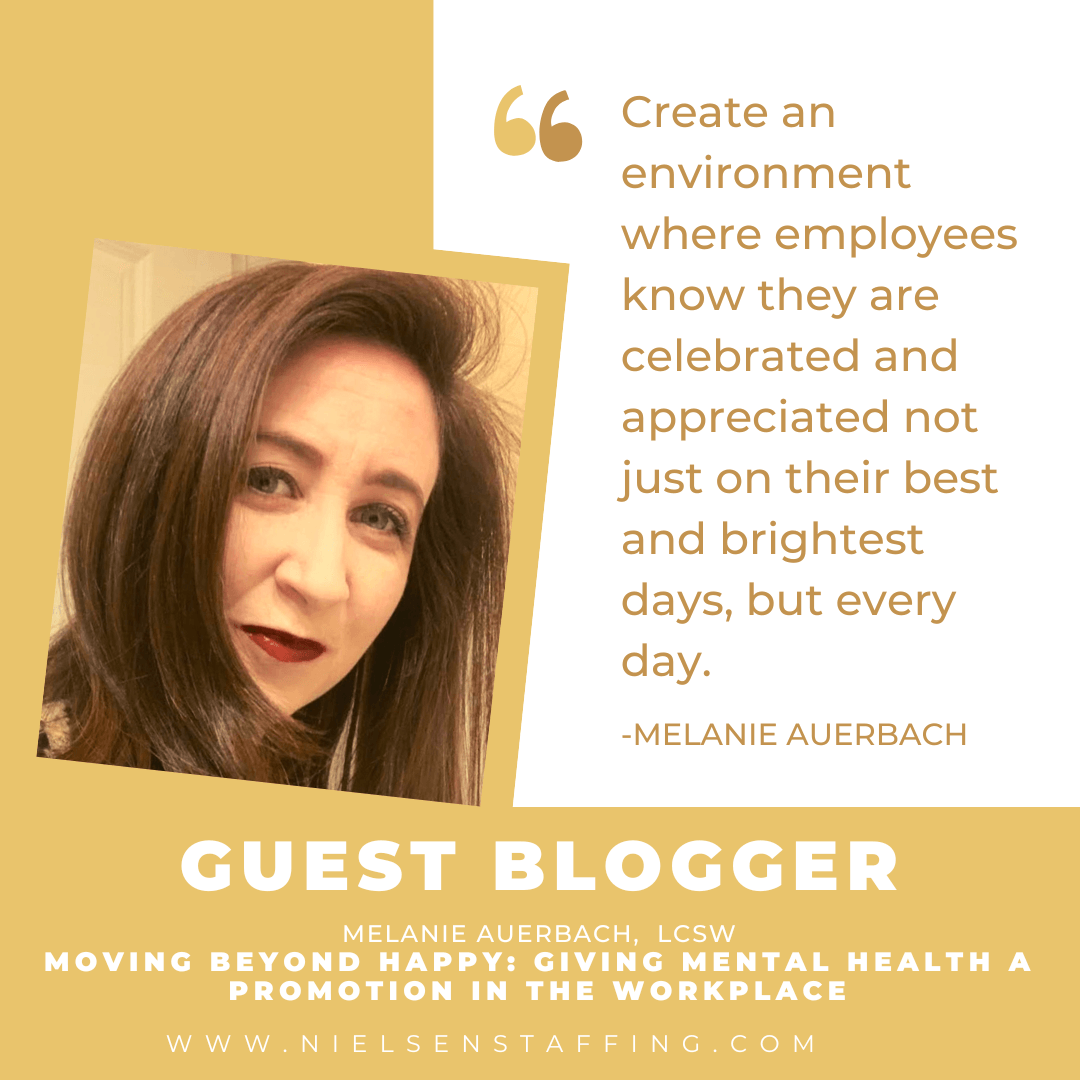Moving Beyond Happy: Giving Mental Health a Workplace Promotion
I was also penalized when clients missed their sessions for reasons that were out of my control. When I finally left this job due to burnout, I was required to open with new clients (meaning go through the intake process) through my very last week of employment. Ironically, I work in the mental health industry and my employer emphasized self-care, but never seemed to be able to help make this a reality.
Burnout is more than a Buzzword. Look out for the warning signs.
When organizational values aren't in sync, employees in every industry feel it. The trend of losing employees due to burnout has grown with alarming intensity in recent years. According to the American Psychological Association, “issues like the politicization of masks and vaccines and feelings of lack of support from the government and workplaces have caused workers—especially those in public-facing jobs—to become cynical about their jobs and the public in general. This kind of cynicism is powerful because it undermines people’s feelings about the value of their work, which can help motivate them during hard times ” (2).
Burnout VS Stress:
It is important to make the distinction between stress and burnout. Burnout can best be described as highly accumulated, unresolved work place stress. Further, “when you’re suffering from burnout, it’s more than just fatigue. You have a deep sense of disillusionment and hopelessness that your efforts have been in vain. Life loses its meaning, and small tasks feel like a hike up Mount Everest. Your interests and motivation dry up, and you fail to meet even the smallest obligations.” (3)
Common signs of burnout include the following:
- Lowered immunity to illness
- Withdrawal from coworkers and social situations
- Sleep deprivation
- Trouble concentrating
- Moodiness, impatience, and being short-tempered (3)
Practical Strategies for Taking Care of Mental Health
For full time employees, working hours constitute a majority of waking hours. Therefore what happens at work (remotely or in-person) is a major indicator of how well someone will arrive at mental well-being or lack thereof.
It may come as a surprise, but leaders should be mindful of putting happiness on a pedestal in the workplace. Many well-meaning people come to therapy saying, “I just want to be happy." While I don’t want to devalue this very legitimate desire, it is one that needs to be handled with care. Why do I say this? From a young age, many of us are socialized to believe that we are more lovable or likable when we are happy, smiley, lighthearted, etcetera. Maybe you can recall a time when you were compared to a sibling or a classmate as an incentive to stop crying or showing emotion. For example, “if you were able to behave like your sister/ classmate/ friend, you too could have ice cream." It’s possible that sometimes the chase for happiness is really, at its core, the pursuit of just wanting to receive more approval from others. Further, people who feel pressure to be happy often find it eludes them.
That said, not everyone seeking happiness is seeking it for the sake of approval. Many Americans rate “happy” emotions as being more important than “calm” or “peaceful” (5). Understandably, there is a kind of euphoria that happiness can facilitate that no other emotion can. Happiness is never static, however, and as I often remind my clients, trying to avoid your negative emotions is “dead people goals” because dead people can never feel sad. When the focus is shifted to wellness rather than happiness, all feelings are welcome and individuals are free to find value in the full range of their human experiences.
When the focus is shifted to wellness rather than happiness, all feelings are welcome and individuals are free to find value in the full range of their human experiences.
If leaders want to foster a transformational workspace, they should create an environment where employees know they are celebrated and appreciated not just on their best and brightest days, but every day. Normalize your workforce showing disappointment, frustration, and apprehension, rather than just excitement, enthusiasm, and gratitude. Challenge the belief that one can compartmentalize work and home life and be considerate of the co-workers who may be fielding enormous grief and pain due to personal circumstances. In doing this you can remind your workforce that their value is intrinsic and not just utilitarian.
Understandably, some will read what I have outlined here with concern that an “open” culture of emotions will lead to disorder and inevitable workplace conflict. But when managed healthily, the opposite tends to be true. There is a practice in therapy called emotion expansion, which relies on the premise that individuals who allow themselves to feel their emotions and engage with them tend to be more well-adjusted and suffer less harm than individuals who suppress them. The examples below are practical examples of what this can look like.
MENTAL HEALTH CARE STRATEGIES
FOR MANAGERS & EMPLOYEES
- Give your employees access to mental health benefits.
- Communicate regularly about mental health benefits and set an example by also using them.
- Establish a comfort level. If your supervisee is crying in front of you in a supervisory setting, you can say something to the effect of, “it’s okay to cry in supervision, in fact I appreciate you trusting me with your emotions.” Most people feel incredibly vulnerable crying in the workplace, as it is something many of us have been socialized to believe is taboo. Take this as a prime opportunity to shift cultural norms and expectations.
- Differentiate emotions versus behaviors in the workplace. All employees are allowed to have their emotions, but how these emotions are expressed and acted on in the workplace may or may not be beneficial. Have protocols and directives in place that tell employees where to go and what to do if their negative emotions involve someone else in the workplace. Emotional honesty need not exclude behavioral accountability.
- Remind your employees that they are the expert of their own experience! If you are unsure where to start with someone, you can simply start by asking what would feel the most helpful to them based on what they are experiencing.
Ultimately, each workplace is as diverse as the people inside of it and I want to emphasize that what I have shared is in no way exhaustive. My intent is to help leaders and managers be more preventative in their workspaces rather than reactive when it comes to creating strong company culture and promoting mental health. While challenges will inevitably arise when it comes to this topic, investing in employee mental health is always less costly than the failure to do so.
More about Melanie Auerbach:
Melanie Auerbach (LCSW) practices cognitive behavioral therapy through an employer sponsored mental health company. She integrates her clinical skill-set with state of the art technology to provide quality short term care to a diverse client base. Outside of work, you can find Melanie absorbed in a great novel, learning bachata, or improving her skills at aerial yoga. To get in touch with Melanie, connect with her on LinkedIn.
References & Resources:
(2) https://www.apa.org/monitor/2022/01/special-burnout-stress
(5) https://www.lyrahealth.com/blog/chasing-happiness/













